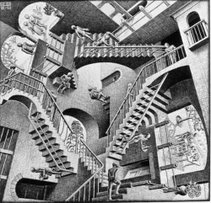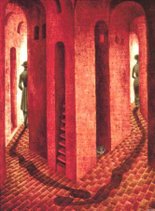Every time we face a situation in language learning, we relay on our schemata and not only on the linguistic information we are facing. These schemata are unconscious mental structures that represent an individual's generic knowledge about the world. It is through schemata that old knowledge influences new information.
Relationships among different levels of abstraction are conceived to be like webs (rather than hierarchical); thus each one is interconnected with many others (as in the image above).
In 1977, Richard C. Anderson brought this concept into the education field. But the term was not entirely new as Piaget had already used it.
According to Anderson, some characteristics of schemata are:
- Schemata are always organized meaningfully, can be added to, and, as an individual gains experience, develop to include more variables and more specificity.
- Each schema is embedded in other schemata and itself contains subschema.
- Schemata change moment by moment as information is received.
- They may also be reorganized when incoming data reveals a need to restructure the concept.
- The mental representations used during perception and comprehension, and which evolve as a result of these processes, combine to form a whole which is greater than the sum of its parts.












No comments:
Post a Comment